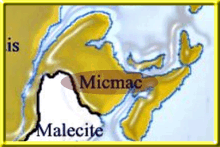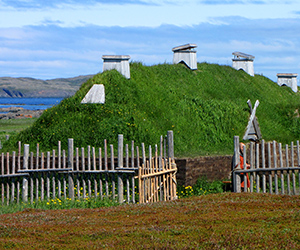CANADA HISTORY
Blackfoot

The Blackfoot people, also known as the Siksika, are a group of Indigenous peoples who have lived in the Great Plains region of North America for thousands of years. They consist of four distinct groups: the Siksika (Blackfoot), the Kainai (Blood), the Piikani (Peigan), and the North Peigan. The Blackfoot have a rich and diverse cultural history that has been shaped by their relationship with the land, their spiritual beliefs, and their interactions with other Indigenous peoples and European settlers.
Culture and Social Structure
The Blackfoot people were traditionally a nomadic society, relying heavily on the buffalo for their subsistence. The buffalo provided them with food, clothing, shelter, and tools. They hunted buffalo using complex strategies, including communal drives where entire communities worked together to corral and kill buffalo. The buffalo hunt was not just an economic activity; it was a sacred event that reinforced social bonds and was deeply connected to their spiritual beliefs. In addition to buffalo, they also hunted elk, deer, antelope, and gathered wild plants and berries.
The Blackfoot people lived in extended families and formed bands, each with its own leadership, often determined by respect and merit rather than formal hereditary systems. Their society was largely egalitarian, and decision-making was generally conducted through consensus, especially for important matters like warfare, trade, or negotiations with other tribes. Leadership roles were often informal, with individuals recognized for their abilities in specific areas such as hunting, diplomacy, or warfare.
Matrilineal descent was common, and women had significant roles within their society. Women were responsible for many domestic tasks such as food preparation, creating tipis, and gathering plants. Men typically hunted, fought in wars, and traded with neighboring tribes.
Spiritual Beliefs
The spiritual world of the Blackfoot was deeply tied to the natural world. They believed in a complex pantheon of gods and spirits that governed natural elements, such as the sun, moon, animals, and weather. Central to their belief system was the concept of Animism, the idea that everything in nature, including animals, plants, and even geographical features like rivers and mountains, had a spirit. The Sun was particularly important in Blackfoot spirituality, and many rituals were centered around honoring it.
The Sun Dance was one of the most important religious ceremonies for the Blackfoot, as it was a communal gathering that involved fasting, dancing, and prayer, often lasting several days. It was a ceremony that celebrated renewal and the connection between the people and the land. Oral traditions, storytelling, songs, and dances were used to pass down spiritual and cultural knowledge from one generation to the next.
Territory and Geographic Area
The Blackfoot people traditionally lived in the Great Plains region, which spanned parts of what is now Montana, Alberta, and Saskatchewan. This territory included vast prairies, which were well-suited for their nomadic lifestyle and reliance on buffalo herds. The Blackfoot used horses, which were introduced to the region by the Spanish in the late 1600s, to follow buffalo migrations across these expansive plains. The introduction of horses had a profound effect on the Blackfoot, allowing them to become more mobile and effective hunters, and enhancing their prowess in warfare.
Warfare and Alliances
The Blackfoot were known for their horsemanship and their skill in warfare. They engaged in conflicts with neighboring tribes, including the Cree, Assiniboine, and Crow, often over territory and resources. The Blackfoot were fierce warriors, and their reputation as formidable fighters helped them maintain control over large portions of the Great Plains. Their main enemies before the arrival of Europeans were the Shoshone and the Cree, with whom they had longstanding rivalries.
The Blackfoot also formed alliances with other tribes, particularly in the context of trade and diplomacy. They participated in trade networks with other Indigenous groups, exchanging goods such as horses, buffalo hides, and weapons. The Blackfoot were key players in the fur trade once European traders began entering the region. Their early contact with European fur traders—notably the Hudson's Bay Company and the North West Company—further solidified their importance in regional trade networks.
Political Structure
The Blackfoot political structure was based on a combination of tribal and band leadership. Each of the four Blackfoot tribes was divided into bands, which were relatively autonomous. Chiefs were chosen based on merit, bravery, and leadership abilities, particularly in war and during hunts. There was no single overarching leader of all Blackfoot tribes, but rather, each band had its own leaders. Chiefs played important roles in diplomacy, negotiating with other tribes and later with European settlers.
During wartime, a war chief would be selected to lead raids or defend the tribe. Warfare was an integral part of Blackfoot culture, often fought for honor, revenge, or the acquisition of horses and territory. The Blackfoot were known for their hit-and-run tactics and their ability to use the environment and their knowledge of buffalo movements to their advantage.
Slavery and Captive-Taking
Although the Blackfoot did not practice chattel slavery in the same way as Europeans did, they did engage in captive-taking during raids on enemy tribes. Captives were sometimes integrated into Blackfoot society, particularly women and children, who could be adopted into the tribe. Men were more likely to be killed or held as captives for negotiation purposes. Captive-taking was a common practice among many Plains Indigenous groups and was often part of the larger warfare dynamics between competing tribes.
European Contact and Treaty 7
The first sustained contact between the Blackfoot and Europeans came in the late 1700s with fur traders and explorers. The Blackfoot quickly adapted to the introduction of European trade goods like firearms, metal tools, and textiles. However, with this contact came new challenges, including European diseases such as smallpox, which decimated the Blackfoot population.
In 1877, the Blackfoot people signed Treaty 7 with the Canadian government. The treaty established reserves for the Blackfoot and other Indigenous peoples in exchange for land and resources. Like many other treaties, it resulted in significant loss of land for the Blackfoot people, and the buffalo herds that had sustained them were rapidly declining due to overhunting by European settlers. This forced the Blackfoot into a more sedentary lifestyle on the reserves, with government-imposed farming schemes that were not successful due to poor soil conditions.
Decline of the Buffalo and Cultural Impact
The decline of buffalo herds in the late 19th century had a devastating effect on the Blackfoot people. The overhunting of buffalo by European settlers, combined with the encroachment of railroads and settlement, led to the near-extinction of the buffalo by the 1880s. This collapse of the buffalo population stripped the Blackfoot of their primary food source, forcing many into dependence on government rations.
The Indian Act of 1951 further eroded Blackfoot autonomy by consolidating and centralizing government control over Indigenous peoples and their lands. It led to the loss of much of the Blackfoot’s cultural and economic independence, as the Canadian government imposed assimilation policies aimed at erasing Indigenous languages, traditions, and ways of life.
Cultural Revitalization
In the 20th century, despite centuries of colonization and displacement, the Blackfoot people began efforts toward cultural revitalization. Movements for self-determination, language preservation, and the reclamation of traditional lands gained momentum. Today, many Blackfoot communities are working to preserve their language, traditions, and practices, including hunting and equestrian culture. The horse, a key symbol of Blackfoot identity, continues to play an important role in their cultural celebrations and practices, such as in rodeos and parades.
Timeline of Key Events in Blackfoot History
1600s-1700s: The introduction of horses to the Blackfoot people revolutionizes their hunting and warfare practices.
Late 1700s: The Blackfoot make first contact with European fur traders, establishing trade relations with the Hudson's Bay Company and the North West Company.
1877: Treaty 7 is signed, leading to the establishment of reserves for the Blackfoot and other Plains Indigenous peoples.
1880s: The buffalo herds, the Blackfoot's primary food source, decline due to overhunting by Europeans, leading to severe hardship.
1951: The Indian Act consolidates Canadian government control over Indigenous lands and culture, further eroding Blackfoot autonomy.
Late 20th Century: The Blackfoot begin efforts toward cultural revitalization, language preservation, and asserting their rights as sovereign peoples.
In conclusion, the Blackfoot people have a rich and resilient history deeply connected to the Great Plains of North America. Despite the significant challenges posed by European colonization, loss of land, and the near-extinction of the buffalo, the Blackfoot people have maintained their cultural identity, spiritual beliefs, and traditions. They continue to advocate for their rights and play a central role in Indigenous sovereignty movements in Canada and the United States, preserving their heritage for future generations.

Cite Article : www.canadahistory.com/sections/documents




